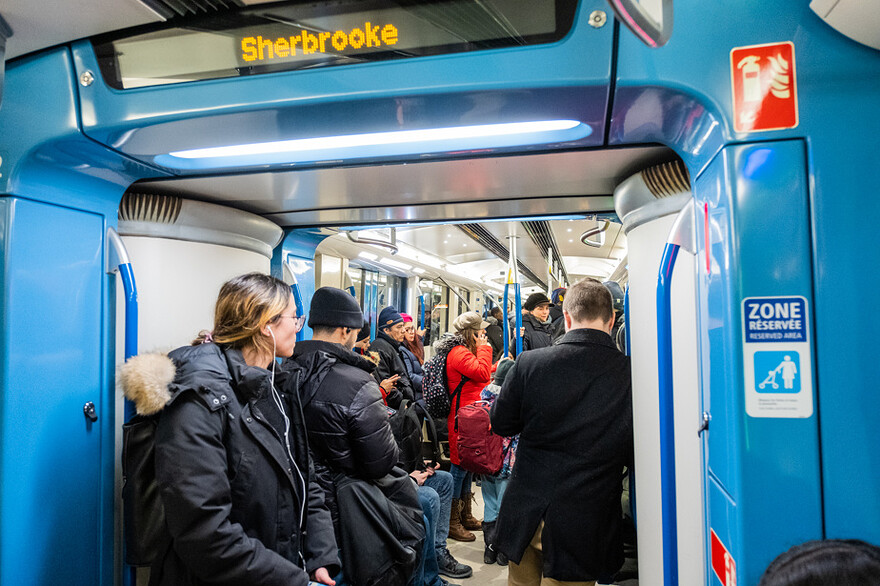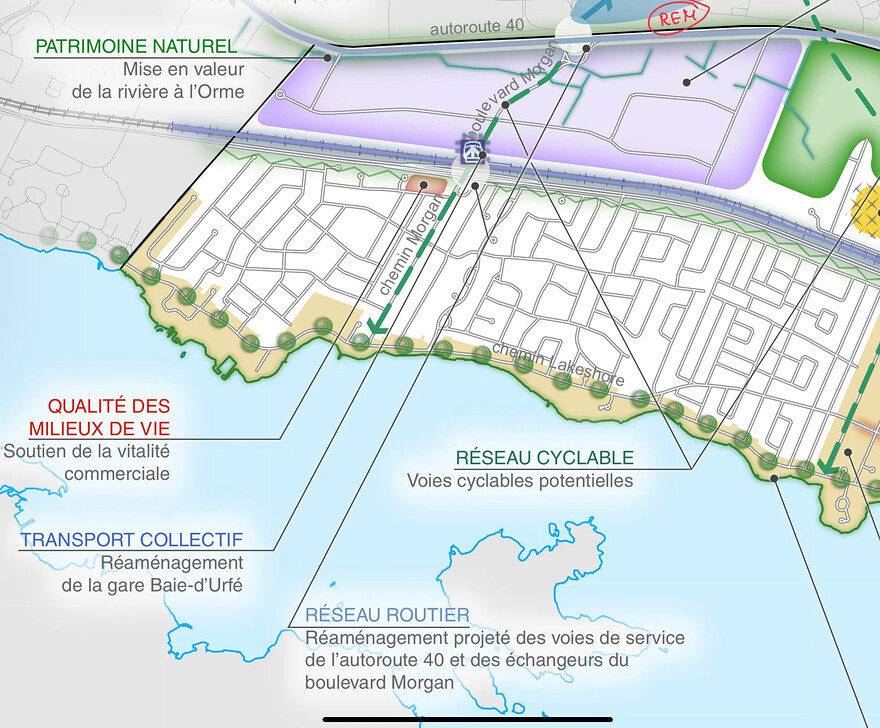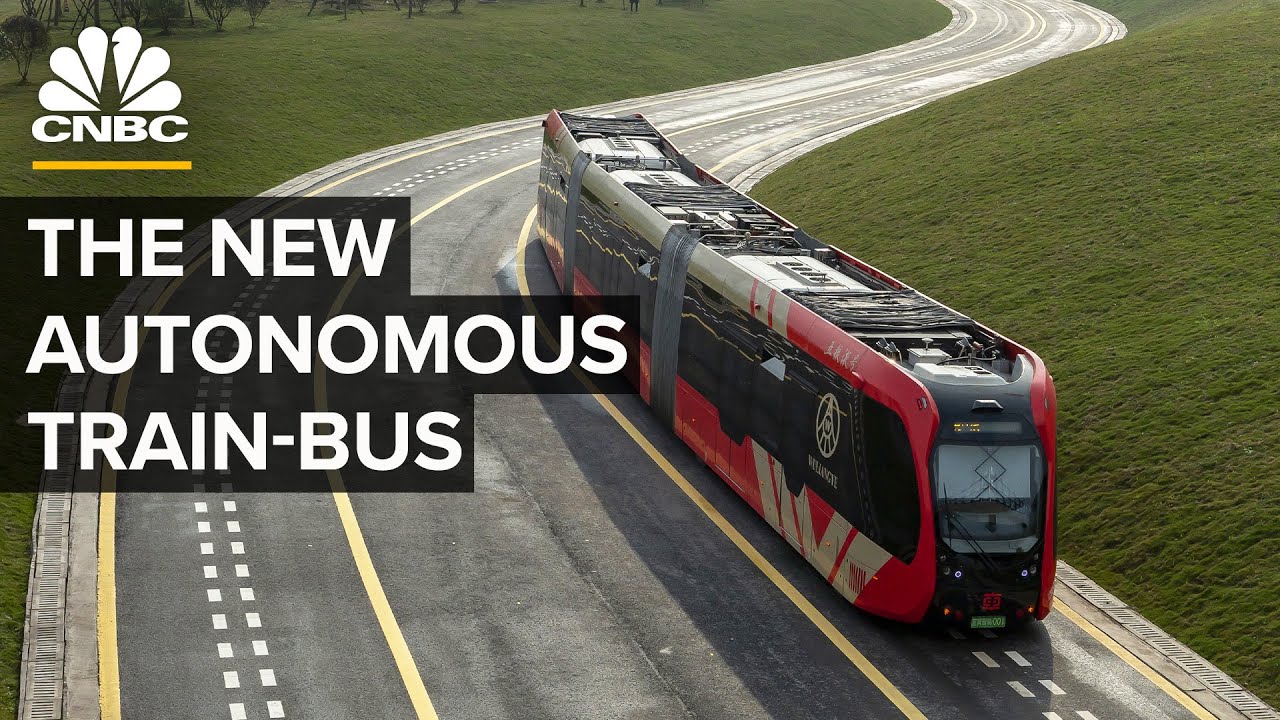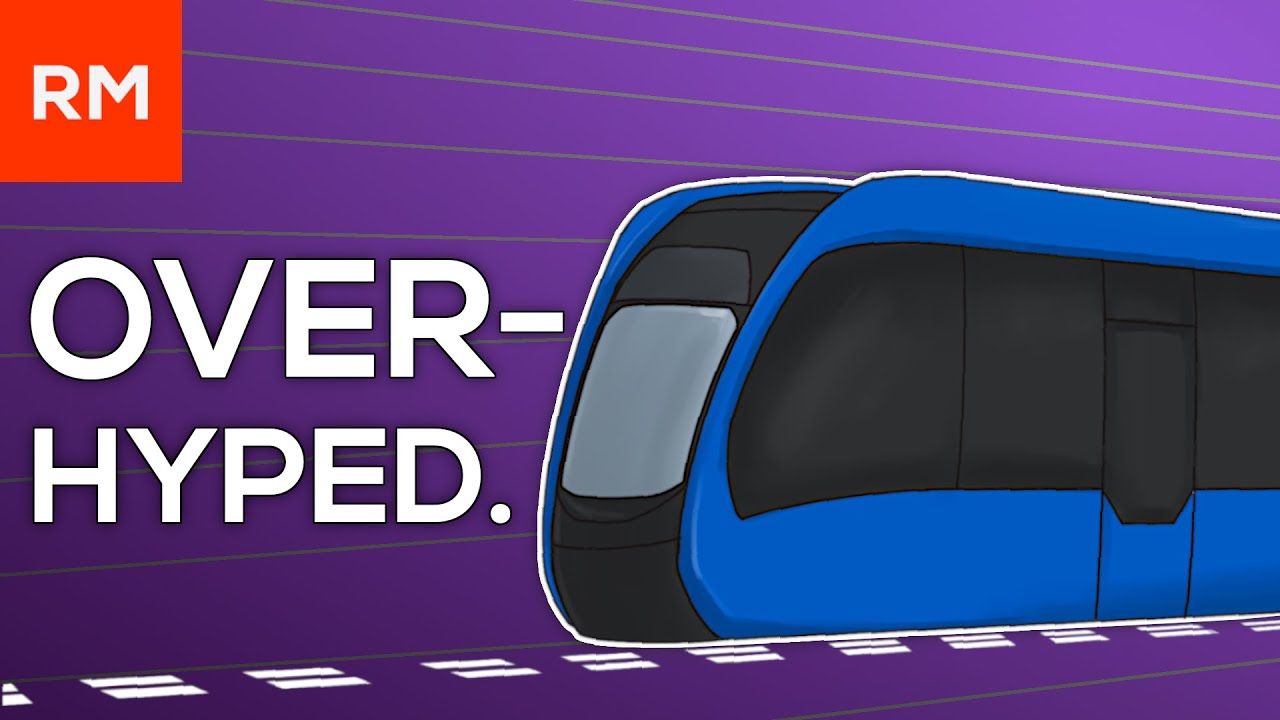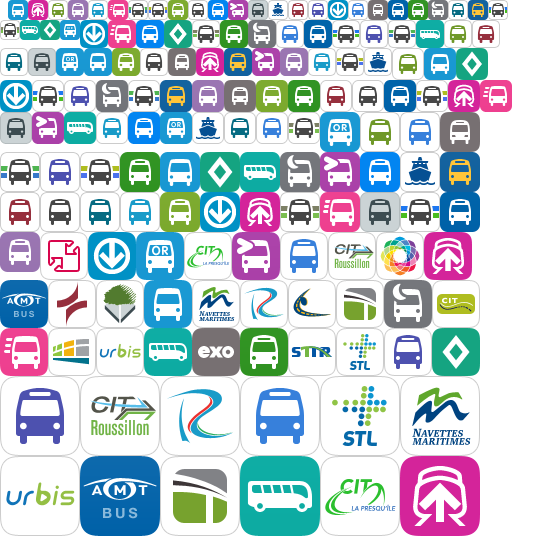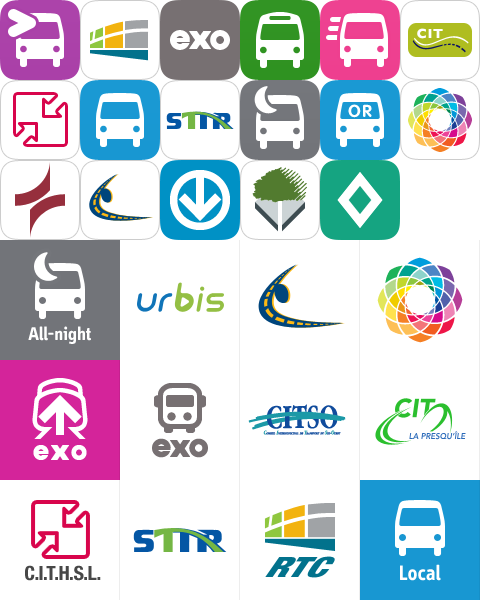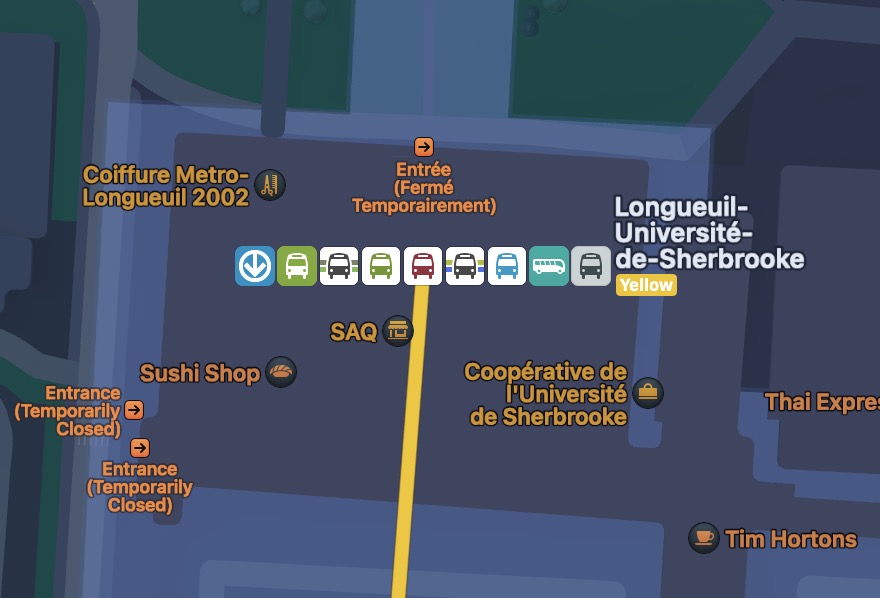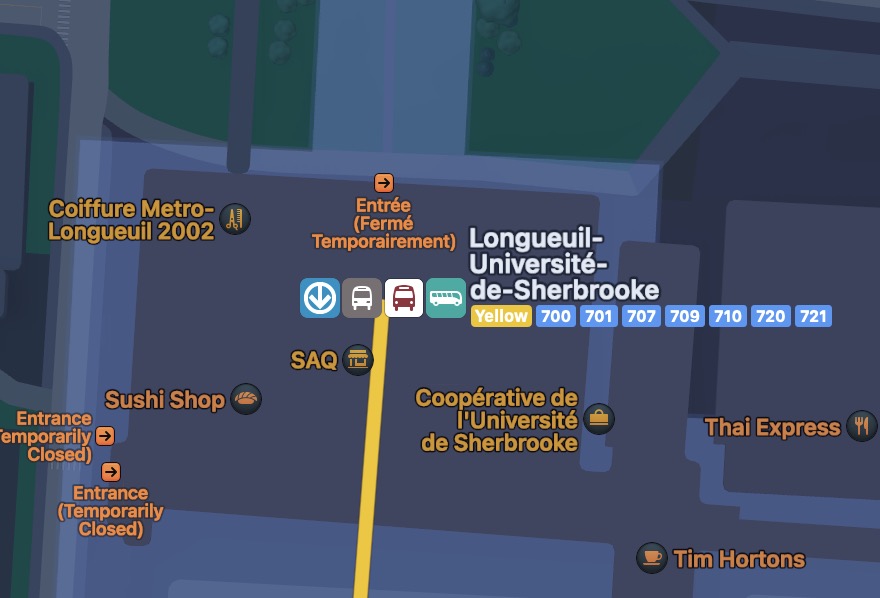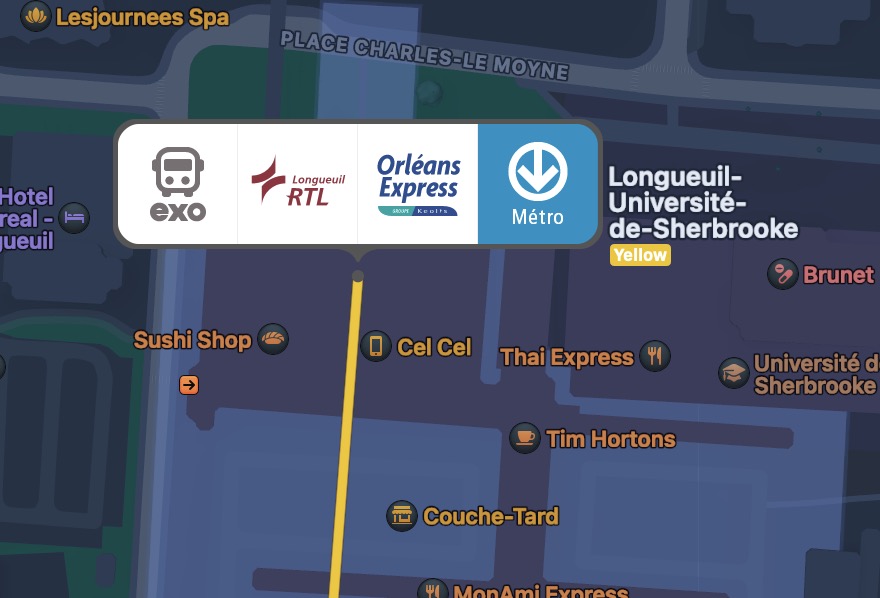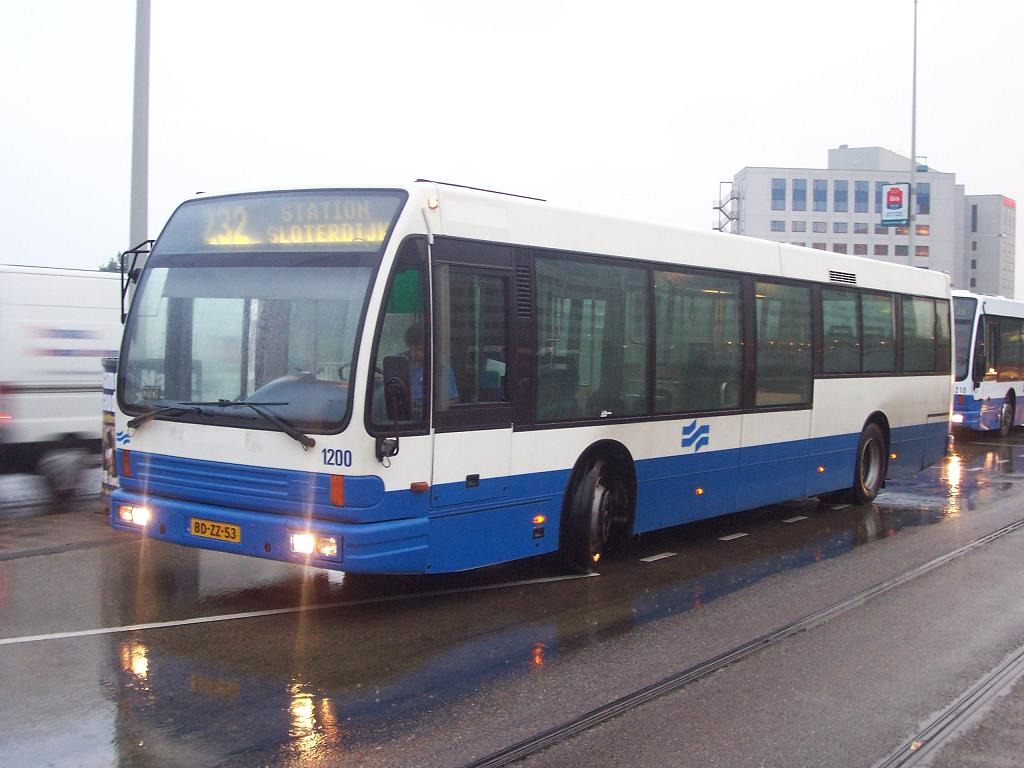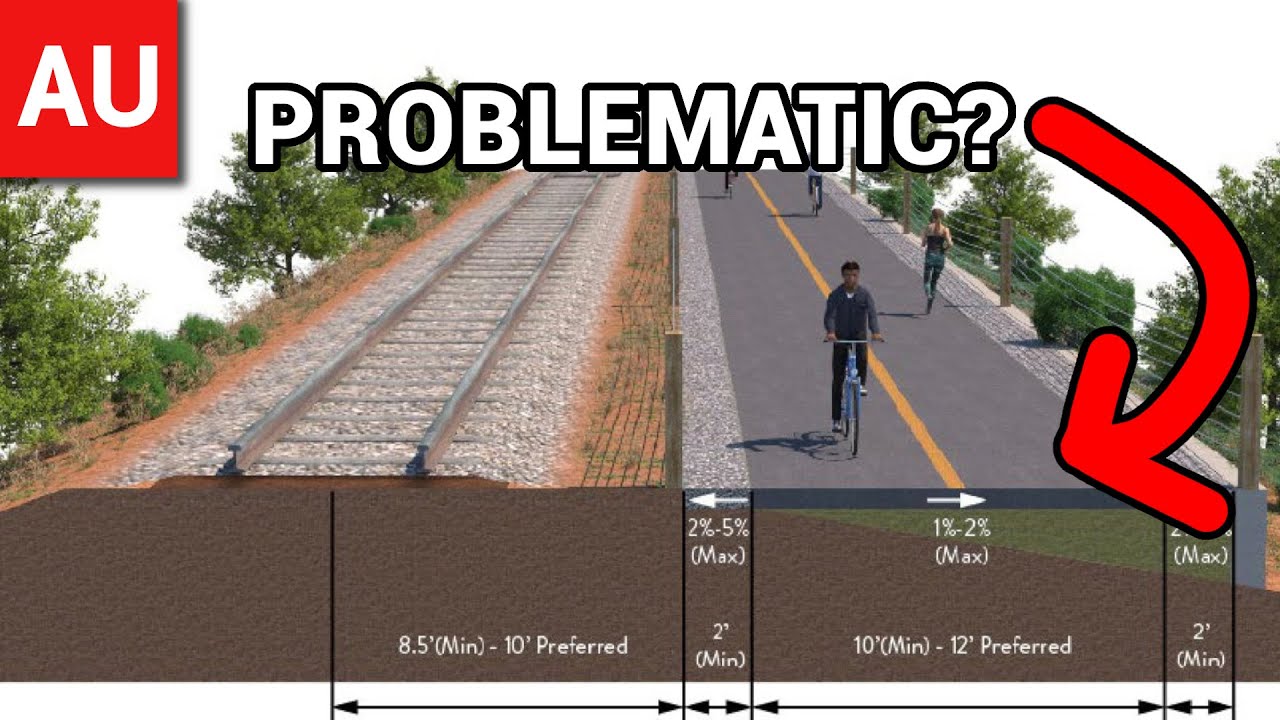Métro et autobus à Montréal L’achalandage en hausse, surtout le week-end
PHOTO CHARLES WILLIAM PELLETIER, ARCHIVES COLLABORATION SPÉCIALE
Usagers du métro de Montréal
L’infolettre Le bulletin de circulation, envoyée tous les vendredis, présente les derniers développements en matière de transport (en tous genres) dans la grande région de Montréal et au Québec.
Publié à 6h00

Henri Ouellette-Vézina La Presse
Le télétravail continue de faire mal au transport collectif, mais l’achalandage revient de plus en plus à la normale le week-end. Les samedis et dimanches, le niveau d’achalandage atteint maintenant 85 % de la fréquentation prépandémique dans la métropole.
Pour la Société de transport de Montréal (STM), cette situation illustre à nouveau que les habitudes de transport des citoyens se transforment rapidement. « La reprise des déplacements pour le loisir et le magasinage, la fin de semaine, est plus importante que la reprise des déplacements pour le travail, la semaine », illustre à ce sujet le porte-parole de la société, Philippe Déry.
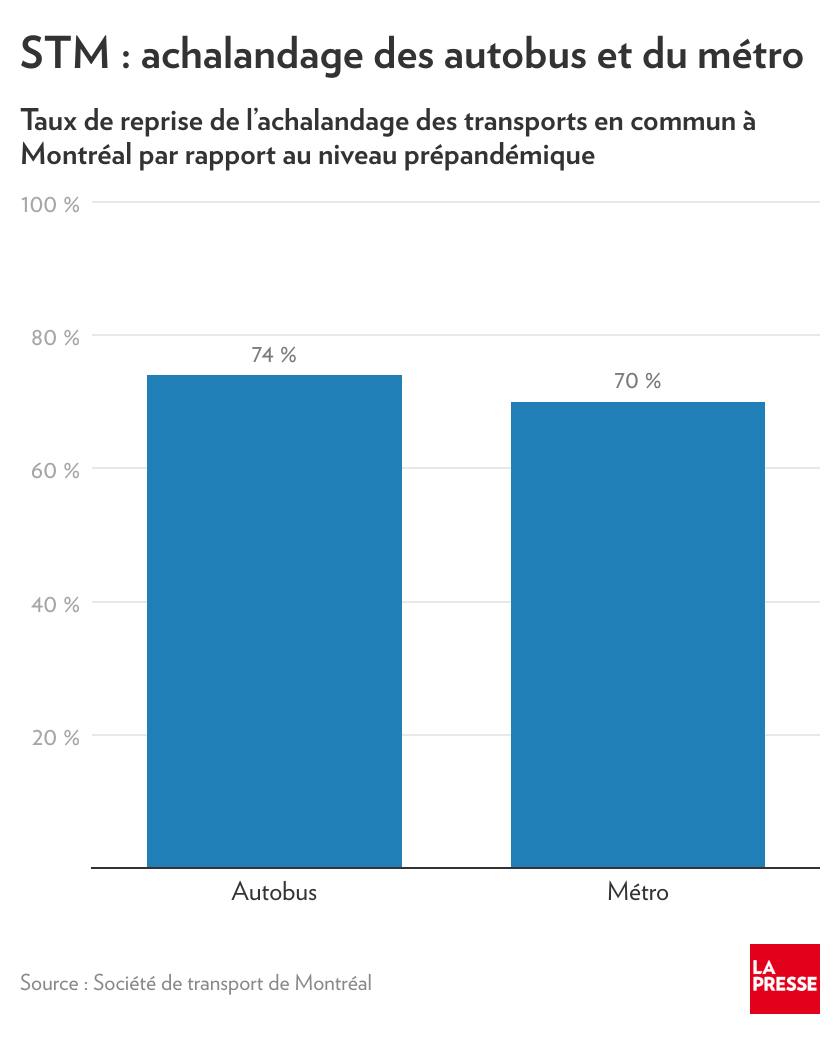
À l’heure actuelle, l’achalandage pour un « jour ouvrable moyen » de la Société de transport de Montréal (STM) représente toujours environ 72 % du niveau de 2019, soit environ 920 000 déplacements. Avant la crise sanitaire, à pareille date, on parlait d’environ 1 280 000 déplacements.
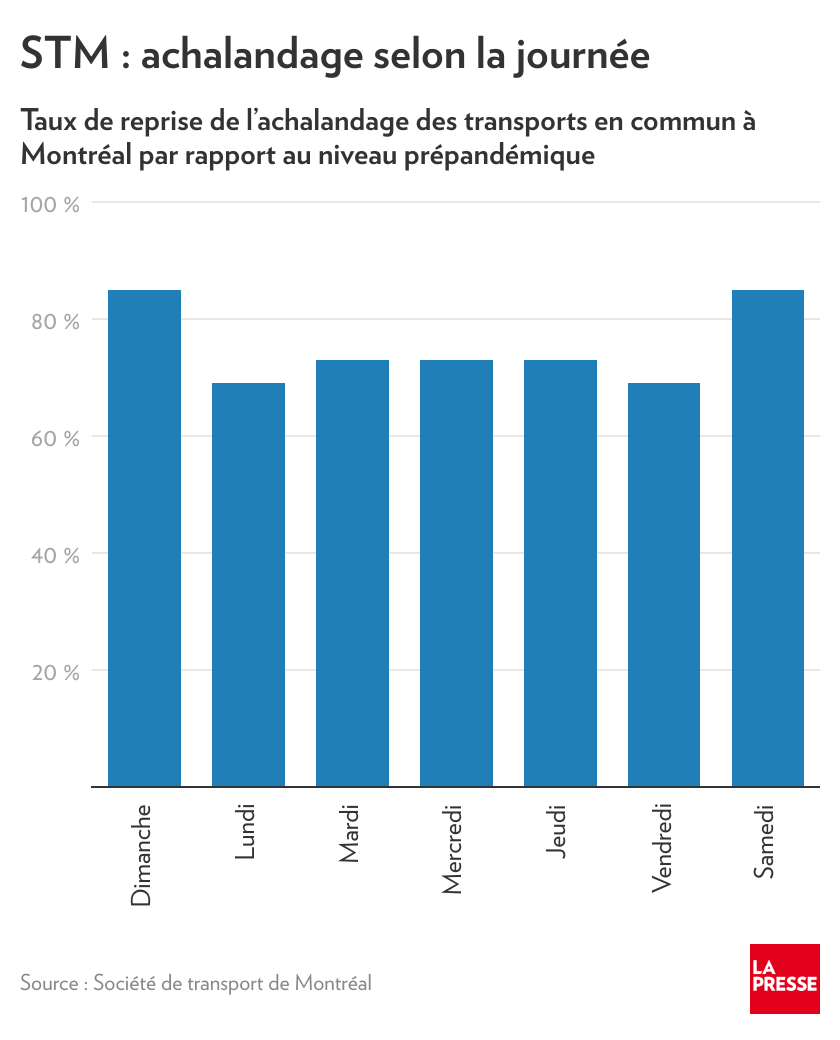
Jusqu’ici, le bus demeure plus populaire (74 %) que le métro (70 %), pendant que le transport adapté demeure stable, autour de 75 %. Au global, cela représente un bond de trois points de pourcentage par rapport à l’automne dernier, où on atteignait 69 % du niveau prépandémique. En semaine, les mardis, mercredis et jeudis « demeurent les journées les plus achalandées », rappelle le porte-parole de la société, Philippe Déry. On note un achalandage d’environ 73 % durant ces journées, contre 69 % lundi et vendredi.
Une hausse du niveau de service réclamée
Pour Catherine Morency, titulaire de la Chaire mobilité à Polytechnique Montréal, la situation illustre qu’« il faut mieux comprendre la demande de déplacement et voir comment on ajuste l’offre ». « Ça commence par avoir vraiment plus d’ambition sur le niveau de service », selon l’experte.
C’est catastrophique d’entendre qu’on n’est pas capable d’avoir les moyens de hausser le service partout. Le concept REM, avec une grande amplitude et une haute fréquence, c’est ce que ça prend, partout.
Catherine Morency, titulaire de la Chaire mobilité à Polytechnique Montréal
Elle se dit « scandalisée » que le gouvernement Legault en soit encore à tenir des consultations – que la ministre des Transports Geneviève Guilbault tiendra en mars – sur la crise du financement en transport collectif. « Je suis tellement choquée qu’on n’ait pas plus d’ambition, que ce soit le jour de la marmotte en transport. La vérité, c’est qu’on les connaît, les sources potentielles de financement. Ça manque d’ambition, de regard réaliste sur l’urgence de faire bouger les choses », conclut Mme Morency.
Les nouvelles de la semaine
Pas assez de transport à Royalmount
Fait plutôt rare : un groupe pharmaceutique a dénoncé cette semaine le manque d’offre en transport collectif dans le secteur industriel de Royalmount. Dans une démarche inusitée, l’entreprise, qui s’est inscrite au Registre des lobbyistes du Québec, demande à la Société de transport de Montréal (STM) d’améliorer son service pour permettre à ses travailleurs de se rendre au travail en toute sécurité. Pharmascience, qui est installée sur l’avenue Royalmount depuis plusieurs années déjà, a en effet entamé ces jours-ci des démarches pour « améliorer la mobilité des employés du quartier industriel de Royalmount qui rencontrent des difficultés à se rendre au travail par les transports en commun », peut-on lire sur une inscription faite en ligne au Registre des lobbyistes.
TGV ou TGF : la pression s’accentue sur Ottawa
La pression s’est accentuée cette semaine sur le gouvernement fédéral dans le dossier du train à grande fréquence (TGF). Le maire de Laval, Stéphane Boyer, qui a rencontré mardi des représentants de VIA Rail, s’est montré en faveur d’un projet de train à grande vitesse (TGV), pour autant qu’il ne « défigure pas des quartiers ». À Québec, la ministre des Transports « privilégie » aussi un TGV. Ottawa, qui a déjà modifié un critère du projet de TGF pour aller au-delà de 200 km/h, recevra d’ici environ un mois les demandes de qualification des entreprises qui souhaitent livrer le projet, après quoi des propositions pourraient commencer à être déposées dès l’été prochain.
Un mur antibruit payé par des résidants ?
Des résidants de Mascouche ont été renversés d’apprendre qu’ils pourraient devoir verser des centaines de milliers de dollars à leur municipalité si un projet de mur antibruit le long de l’autoroute 25 va de l’avant. Une telle structure est une « amélioration sectorielle » qui devra être payée aux trois quarts par les résidants qui en bénéficieront, plutôt que d’être assumée à même le budget municipal. Une missive envoyée aux citoyens a récemment appelé ces derniers à se prononcer clairement. Si 65 % d’entre eux veulent aller de l’avant avec un mur, le projet progressera. Facture : 136 000 $ par résidence si Québec subventionne le chantier, 272 000 $ dans le cas contraire.
